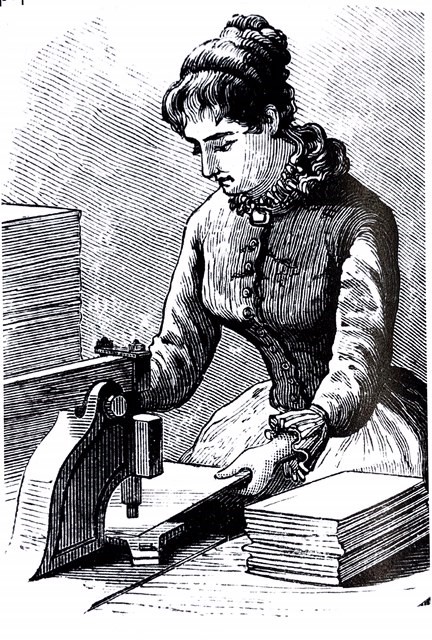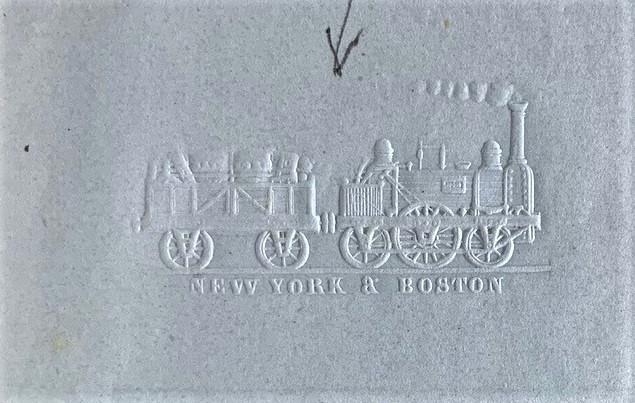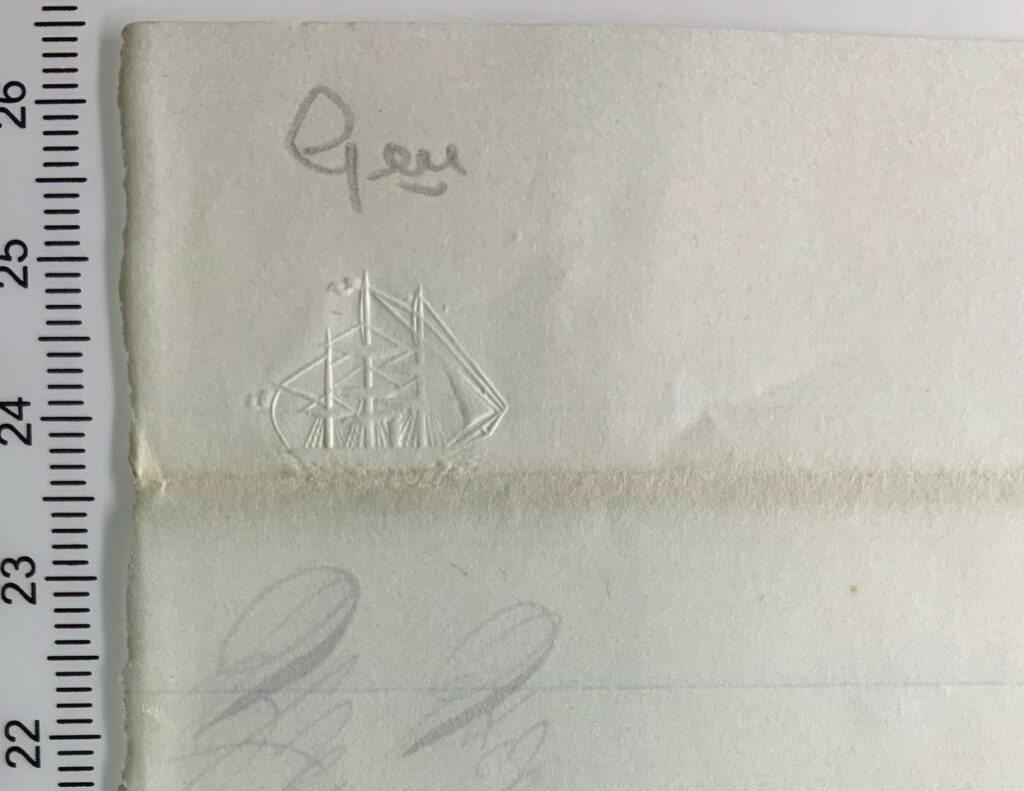This week’s post was created by poet and visual artist Jen Bervin who spent time in the Crane Museum Archives researching embossments on 19th-century stationery. While at the museum, Jen took 2040 pictures! See more of Jen Bervin’s work at www.jenbervin.com.
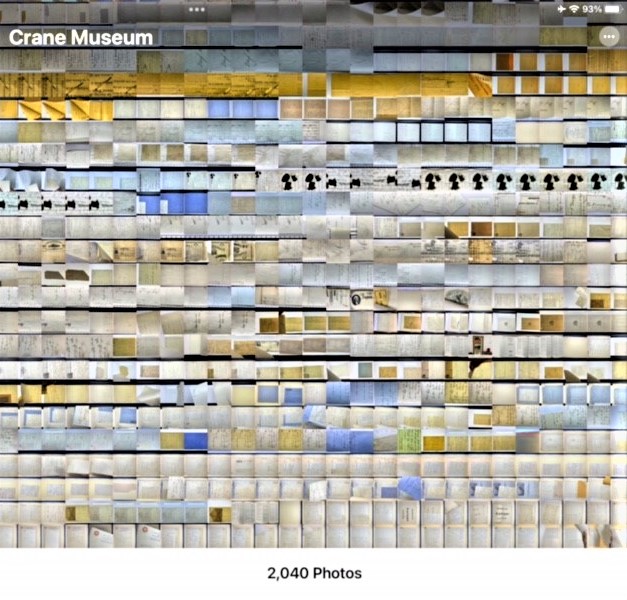
A guest post from Jen Bervin:
The stamped folio embossment images in the upper left-hand corner of the poet Emily Dickinson’s fascicle poems (1858–1864)—tactile, sculptural, ubiquitous, nearly invisible, stamped embossed images, have become a research portal of sorts. My project, Measuring the Sun – encompasses new and ongoing Dickinson research focused on the science and history of Dickinson’s nineteenth-century machine-made cotton and linen rag paper, an emergent technology in the Berkshires during Dickinson’s lifetime. I trace her paper/textile supports through technological innovations, paper and textile mills, women’s labor histories, the international “rag” trade in cotton and linen textile materials, to crops harvested by the enslaved within the machinations of the global empire of cotton. I’m trying to correlate embossments found on Dickinson manuscripts with embossments at Houghton Library, Amherst College, Yale University, New York Public Library Research Libraries, and The Morgan Library and Museum, with Berkshire and Connecticut Valley mill-to-mill correspondence in the archives of Crane Museum of
Papermaking in Dalton, MA.

While there is scholarship linking American watermarks to handmade paper mill histories through 1830, the embossed stamped images on machine-made paper have no such visual index finding aid to correlate images to mills or dates of production within the fifty-year window when embossed machine-made cotton and linen rag paper folios (foolscap) was in circulation. Both Cathleen A. Baker’s From the Hand to the Machine: Nineteenth-Century American Paper and Mediums: Technologies, Materials and Conservation (The Legacy Press, 2010) and Judith A. McGaw’s Most Wonderful Machine: Mechanization and Social Change in Berkshire Paper Making, 1801–1885 (Princeton University Press, 1987) point to women’s industrial labor histories in the rag-sorting rooms of paper mills where women sliced apart cotton and linen garments—excised seams, fasteners, and soiled spots, and sent remaining fragments to be pulped and beaten for paper.
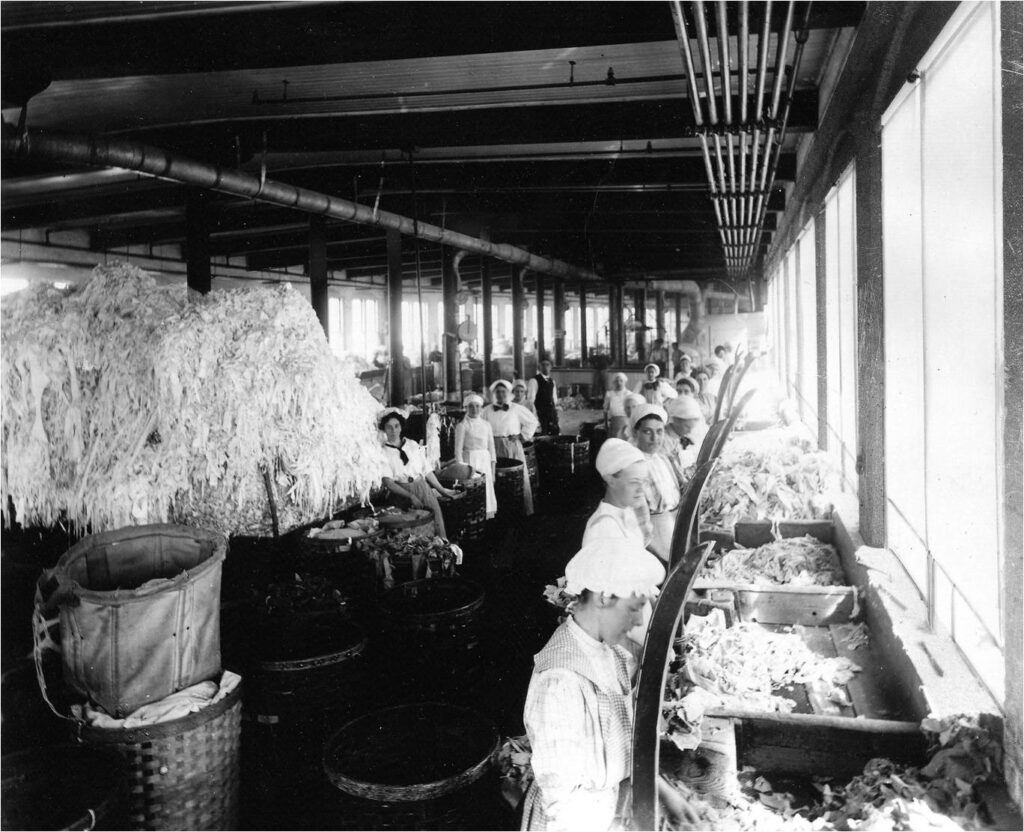
Women staffed the paper mill finishing rooms—they checked quality, counted paper, added rules by machine, folded paper, and hand-fed folios between the stamped embossing dies.
